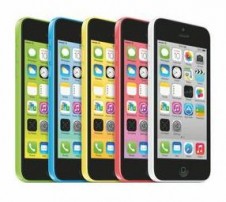The big news out of Apple this week is that the iconic company is introducing a newer, less expensive iPhone in tandem with its revised version of iPhone 5.
Why is the new iPhone 5c ($99) more economical than the new iPhone 5s ($199)? The big reason is the material used to create the body of the 5c — plastic, as opposed to the aluminum body of its higher-end sibling.
But that does not mean that Apple’s award-winning designers or engineers wanted anything about the plastic-bodied phone to look or feel cheap or less-reliable.
In a video introducing the 5c at Cupertino, Calif.-based Apple’s news conference, design chief Jony Ive stressed the high-end manufacturing that goes into the one-piece polycarbonate outer body — from the steel reinforced frame that also serves as the antenna to the high gloss coating.
“It is an extraordinarily rigid structure and has a solid, dense feel that you would not expect from a plastic product,” he said.
Because it is made from plastic, it was easy for the phone maker to offer the 5c in several colors: green, yellow, blue, white and pink.
The lower price for the 5c will allow Apple to reach a wider range of customers, CEO Tim Cook said. The company also said the materials it uses will be environmentally friendly.
Ive said Apple wanted the 5c to be both “colorful and well made.” Using polycarbonate, the company was able to replace multiple parts with a single component, thus creating a “continuous and seamless” exterior.
“[We were] developing form, material and color in unison, with each element informing the other,” he said. “Th
e iPhone 5c is beautifully, unapologetically plastic.”
So if one of the world’s most admired and technologically-advanced devices is made from plastic, plastic injection molding companies in Illinois should have no trouble convincing their customers that “plastic is cool.”
